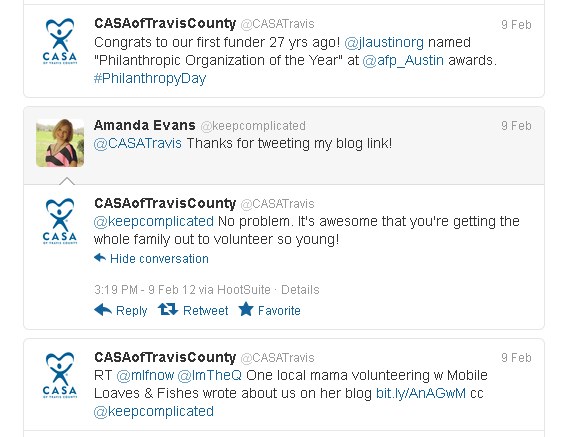 Twitter just celebrated its sixth birthday and now claims 140 million active users. Facebook has 845 million users. That’s lot of people sharing everyday happenings with their friends. Contrast a Facebook or Twitter user reading a friend’s postings with how you feel when called by a telemarketer. One event is a welcomed social exchange and the other an invasion of privacy. Old style marketing methods (cold calling and unrequested emails) are being replaced by a new approach to donor relationships referred to as Unmarketing, Inbound marketing, or relationship marketing.
Twitter just celebrated its sixth birthday and now claims 140 million active users. Facebook has 845 million users. That’s lot of people sharing everyday happenings with their friends. Contrast a Facebook or Twitter user reading a friend’s postings with how you feel when called by a telemarketer. One event is a welcomed social exchange and the other an invasion of privacy. Old style marketing methods (cold calling and unrequested emails) are being replaced by a new approach to donor relationships referred to as Unmarketing, Inbound marketing, or relationship marketing.
The goal of this new approach is to reach existing donors and as yet undiscovered donors using blogs and social media in a positive, noninvasive way. Think about it — we live in the age of the National Do Not Call List to avoid telemarketers, spam filters to zap unwanted e‑mails, ad block software for web browsers that virtually eliminate any advertisements on the Internet, and digital video recorders that enable commercial free television viewing. How do you reach out to donor/advocates that make such an effort to avoid being bothered?
You do it with fresh, intriguing, targeted content aimed at your existing donors and your as yet undiscovered future advocates, as well. You do it by building relationships with your existing and future advocates using social media sites such as Twitter and Facebook. In addition, you do it by using a toolbox of free software to make sure your content is both effective and discoverable. Future blog entries will discuss each of these steps in enough detail that you should be able to experiment with UnMarketing on your own. For now, let’s look at an overview of UnMarketing in action.
Fresh, Intriguing, Targeted Content
Invasive Marketing (on your front porch): DING DONG. “Hi, we’re working on a new driveway down the street and can offer you a special price if you’ll commit now.”
Relationship Marketing (posted on Facebook): “Mary, I thought you’d be interested in this blog post on getting your kids to do their homework.”
The second example is an article recommended by a friend of Mary’s and it contains intriguing content. She is going to read it and because it was posted on the website for Davidson Academy (a private school in Nashville, Tennessee), Mary will visit their site willingly. Mary is the mother of three small children, therefore the content is targeted to her interests. Visit Davidson’s blog and you’ll discover that new entries are posted about every two weeks… the content is fresh.
Relationships on Twitter and Facebook
Invasive Marketing (posted on Twitter): Tweet 1-“Our Gala is November 22. Call for details.” Tweet 2-“New Clinic hours begin May 10th.” Tweet 3-“Jog for a Cause, sign up here.”
Relationship Marketing (posted on Twitter): Translation for Twitter Newbies: This is the Twitter account for CASA of Travis County, a Texas nonprofit for Court Appointed Special Advocates (for Children)
(The oldest entry is at the bottom… newer entries are on top. Don’t worry, you’ll understand Twitterese in no time.)
The nonprofit, CASA, congratulates a donor who was recognized by another organization. Note — all of these entries are not about CASA. CASA is Tweeting about other people and organizations.
Local mom, Amanda Evans, thanks CASA for mentioning her blog about her volunteer work. These two middle Tweets are a conversation. Amanda and CASA are communicating with one another. This is the beginning (or continuation) of a social media relationship. It is more about people and less about CASA (and that tells you something about CASA.)
CASA comments on Amanda’s thank you. (Note — I know I said the newest Tweet is on the top, but with a displayed conversation, the order is reversed. Go figure.)
CASA recognizes what Amanda Evans is doing to help her community and her family.
If you believe that your followers would be interested, it’s good to share another Twitter user’s Tweet (called a retweet or RT) and to post an occasional one way item. But the power here is in relationships. If Amanda has followers on Facebook as well as Twitter, all of those friends were introduced to CASA as an organization that cares.

